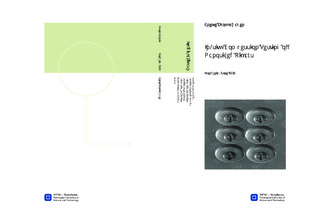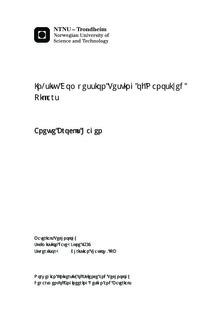| dc.description.abstract | Applications of nanomechanical testing methods have become increasingly important in all fields of material research. There is a significant interest in obtaining information about material features at small scales, in order to get a detailed characterization of the materials deformation behavior. To meet the needs, various experimental techniques have been developed to explore mechanical properties at micro-and nanoscale. So far, most small-scale mechanical testing methods have been done at room temperature, since it does not require the special modification of equipment. However, engineering materials are often used at temperatures other than room temperature. The oil and gas industry in the arctic areas are on increase and exploration of these fields require high strength materials capable of significantly reducing the probability of failure in the critical extreme environments. Iron alloys along with other metals are by far the most common metals used in the industry due to their great range of desirable properties.In view of the long-standing contradictory statements on the deformation of bcc single crystals and their macroscopic slip planes, recent insights and developments are reported in this thesis. The literatures reveals that the flow stress of Fe have a pronounced dependence of crystal orientation and temperature, mostly due to non-planar spreading of a/2<111> type dislocation cores [1]. They exhibit complex slip modes during deformation and show a severe glide direction sensitivity due to the dislocation core structure. Recently conducted experiments on pure Fe micropillars, shows that slip is activated on both {110} and {112} planes at room temperature. Additionally, slip systems with lower stressed planes are sometimes preferable. However, experimental confrontations of the slip behavior of pure Fe at low temperatures are generally missing in the literature.In the present investigation, attention is focused on constructing and developing a nanomechanical cooling system to study slip behavior of bcc α-Fe at low temperatures. The experimental work included in-situ uniaxial compression tests of Focused Ion Beam (FIB) fabricated pillars with a diameter of 1μm, in the single slip orientations <235> and <149>. Characterization of the crystallographic orientations was done by Electron Backscatter Diffraction (EBSD) analysis, where grains of interest were highlighted. The testing was conducted inside of a Scanning Electron Microscope (SEM) equipped with a PI85 PicoIndenter provided by Hysitron, and the constructed cooling system.From the experimental and analytical work it is concluded that the constructed cooling system has the capability to reduce the sample temperature down to -90°C, whereas the simultaneous cooling of the sample ensure reliable mechanical tests. From the in-situ compression tests at low temperatures, it is seen from slip trace analysis that slip is activated in both {110} and {112} planes, where slip systems with lower Schmid factors are more preferable than the ones with higher stresses, for <235> oriented pillars. Furthermore, it is observed an increased strength with decreasing temperature, by comparing the present results with Rogne and Thalow`s work [2], where Fe pillars of same size were tested at room temperature. The temperature dependency is more prominent for <235> oriented pillars, than for <149> oriented pillars. <235> oriented pillars exhibits 39.8% higher stress at 2.5% strain at -90°C, than <235> oriented pillars obtain at room temperature (1070MPa vs. 644MPa). For <149> oriented pillars a 10.3% higher stress is obtained at -90°C, than <149> oriented pillars obtain at room temperature (710 vs. 637MPa). It is assumed that the subsequent deformation mechanisms are affected of the relative microstructural features of the bcc structure for the different grain orientations. Additionally, activation of secondary slip systems could be aivresult of the breakdown of Schmid`s law as well as small misalignments between indenter tip and pillar top-surface. | nb_NO |

